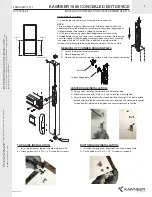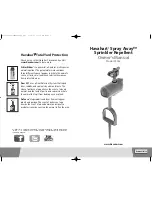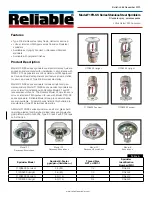
2 — INSTALLATION SPECIFICATIONS AND WIRING
pg. 7
Curtis Model 1351 – December 2018
BATTERY CONNECTIONS (B+, B−)
The 1351 utilizes the 35-pin connector for the logic I/O. The B+ and B– studs provide the higher current
needs of the drivers than a typical KSI supplied controller. Notice that the controller uses two pins (11
& 12) for the Coil Return/Safety Output functions. Use both pins if the peak current of the operating
drivers could exceed 13 amps. Additionally, use the Coil Return/Safety Output to provide reverse battery
polarity protection and safe shutdown of a failed driver.
B+/B– bolt/screw specification:
• Thread: M5 x 0.8
• Material/Class: Class 5.8 or better
• Maximum thread engagement length: 10mm
• Minimum thread engagement: 6 mm
• Torque: 3.2 ± 0.4N.m (28.3 ± 3.5 in-lbs.)
THE LOW-POWER WIRING GUIDELINES
Parameter Settings
The generic 35-pin I/O assignments described in
correspond to the example wiring diagram
configuration shown in
. Many inputs and outputs (I/O) are configurable by their parameter
settings to operate as a digital switch input, an analog input, or as a low-side driver for energizing
contactor and relay coils. Table 2 lists the alternative uses, while
– 18 provide further details
by type.
Encoder feedback (Pins 1, 2, 8, 10, and 14, 15)
All four wires (+5 V, Feedback(s) A & B, and I/O ground) of these position signals should be bundled
together as they run between the rotational/position sensor and system controller logic connector.
Often, they routing is with the rest of the low current wiring harness, but avoid routing near motor
cables. In applications where routing with high-power cables is necessary, shielded cable should be
used with the ground shield connected to the I/O ground (pin 8) only at the controller. In extreme
applications, utilize common mode filters (e.g. ferrite beads).
CANbus (Pins 3 & 4 and 5 & 6)
A good practice is to route the CAN wires as a twisted pair. Keep the CANbus wiring away from the
high current cables, crossing such cables at right angles when necessary.
All other low power wiring
Route the remaining low power wiring according to standard practices. When designing the vehicle’s
wiring and routing, keep the input lines such as throttle, temperature, and the above mentioned motor
feedback signals separate from controller’s output lines such as the coil driver outputs. Avoid routing
the low-power wiring parallel to the high power (and current) battery and motor cables.














































